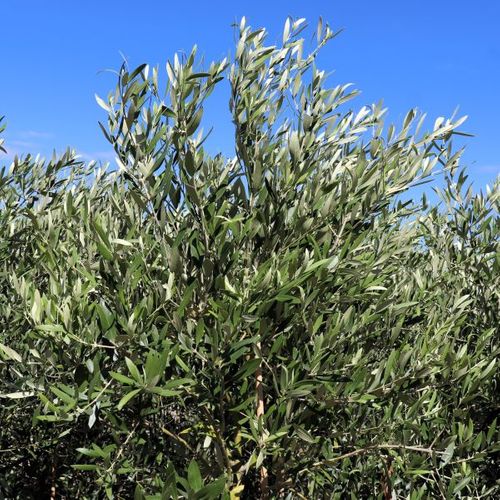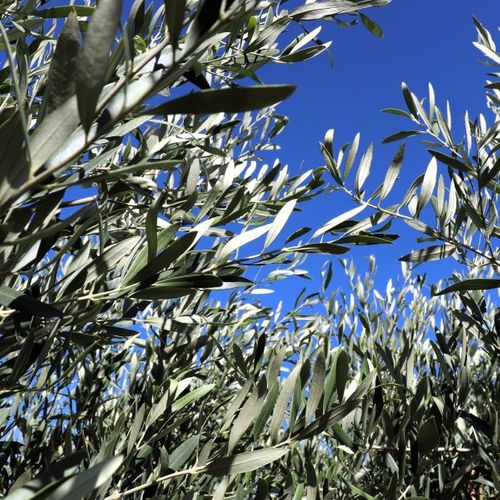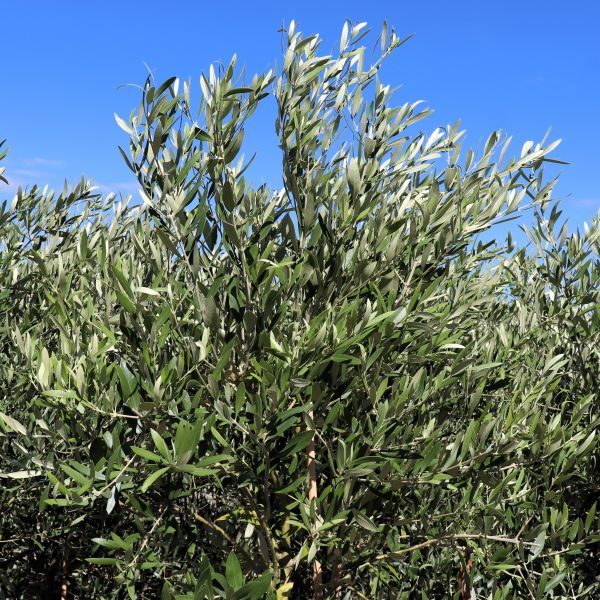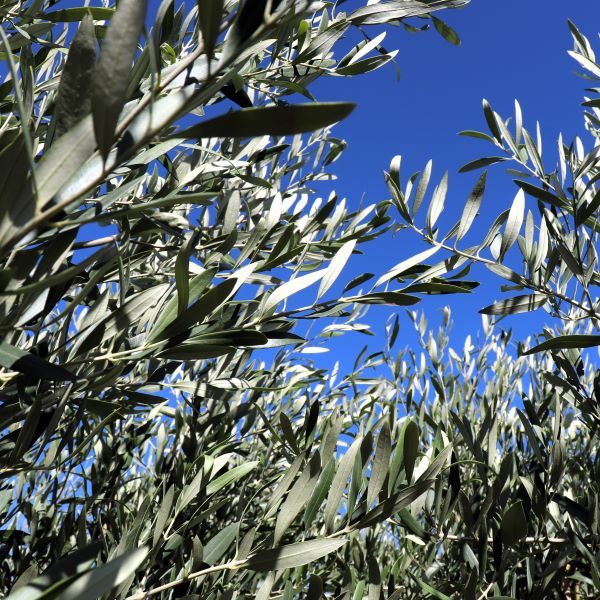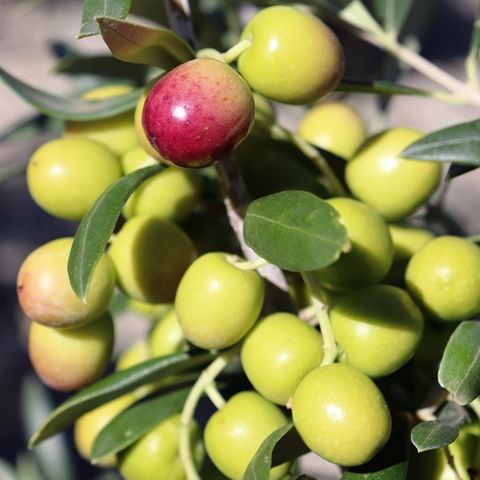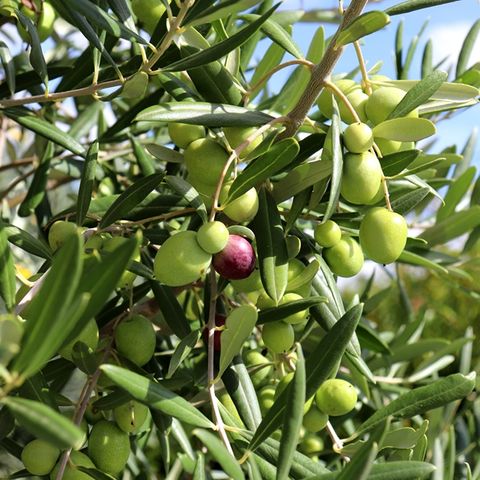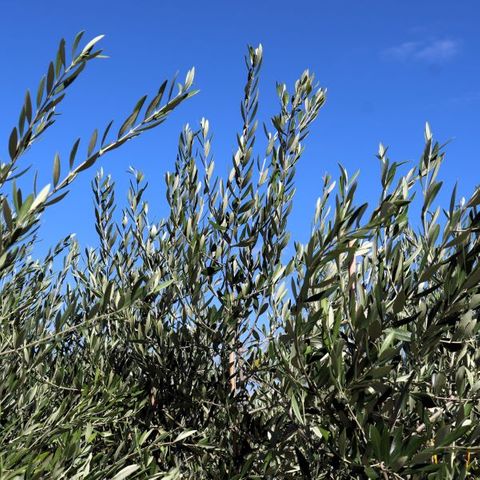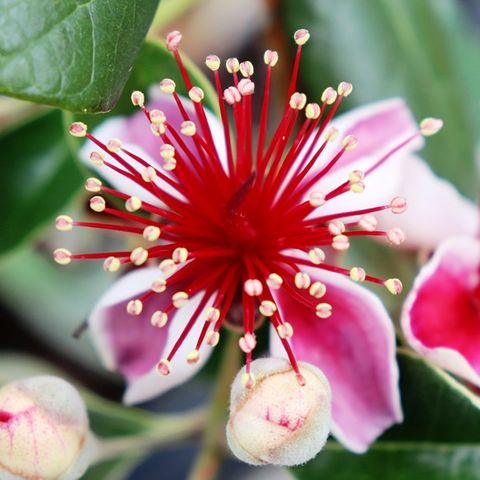Olea europaea 'Kalamata'
An evergreen tree with a graceful, spreading canopy and silvery-green, elongated leaves that have a slightly leathery texture. The gnarled, twisted trunk develops character with age, adding to its ornamental appeal. In spring, small, creamy-white flowers appear, followed by clusters of deep green fruit that ripen to a rich, dark purple. Known for its firm yet succulent flesh, it has a bold, slightly tangy flavour with a distinctive, meaty texture, making it a prized variety for table olives.
Cultural
Full sun is essential for healthy growth and fruit production in olive trees. Harvest fruit in late summer to early winter.
Soil:
Tolerates any well-drained soil, suitable for poor soil.
Aspect:
Full sun.
Maintenance:
Prune in late winter to maintain size and shape. Apply a slow-release fertiliser in spring. Though generally hardy, olive trees can be susceptible to pests like scale and olive lace bug, treat accordingly.
Water Requirements:
Drought tolerant once established but fruit development will benefit from supplementary watering. Will not tolerate waterlogged soil.
Seasonal Interest:
Autumn to winter fruiting.
Landscape Uses
A symbol of peace and happiness, the olive tree has been grown for centuries for its fruit, oil, and timber. Olives are a perfect choice for Mediterranean, coastal, and low-water gardens. They are suitable for windbreaks, screens, topiary, or as specimen trees. Pair them with other plants from our Aussie Mediterranean range, such as Laurus ‘Flavour Master’ and Westringia ‘Jervis Gem’.
Dimensions
Height to 6.0m
Width to 3.0m
Can be kept significantly smaller through pruning.
Width to 3.0m
Can be kept significantly smaller through pruning.

